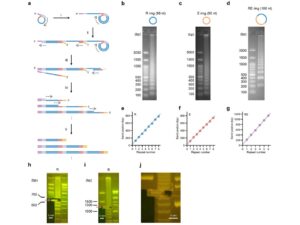RNA editing of genomic neighbors controls antiviral response in fungi
Virus symptom expression involves complex interactions between viruses and their hosts, including antiviral defenses and counter-defenses, many of which are not well understood. This study utilizes Neurospora crassa as a model organism to investigate the role of RNA editing in the fungal antiviral response. We identify two adjacent genes in the genome: the A-to-I RNA-editing enzyme, OTT_1508-like deaminase (old), and its target, zinc fingers adjacent to old (zao). These genes regulate the transcriptional response to viral infection, with old modulating the expression of zao, which functions as a master transcription factor. This regulation contributes to asymptomatic infections by maintaining normal growth and development. However, in RNAi-deficient conditions, the overactivation of these genes leads to severe symptoms, akin to hypersensitive responses observed in plants. Additionally, homologs of zao-old are found as genomic neighbors in various filamentous ascomycetes, suggesting that this RNA-editing system may represent an evolutionarily conserved antiviral mechanism.
Authors: Honda S, Yokoyama A, Suzuki N
投稿者プロフィール
最新の投稿
 令和6年度(FY2024)2025.03.28RNA editing of genomic neighbors controls antiviral response in fungi
令和6年度(FY2024)2025.03.28RNA editing of genomic neighbors controls antiviral response in fungi 令和6年度(FY2024)2025.01.23miRNA-mediated gene silencing in Drosophila larval development involves GW182-dependent and independent mechanisms
令和6年度(FY2024)2025.01.23miRNA-mediated gene silencing in Drosophila larval development involves GW182-dependent and independent mechanisms 令和6年度(FY2024)2025.01.23The dual role of Spn-E in supporting heterotypic ping-pong piRNA amplification in silkworms
令和6年度(FY2024)2025.01.23The dual role of Spn-E in supporting heterotypic ping-pong piRNA amplification in silkworms 令和6年度(FY2024)2025.01.23DNAJA2 and Hero11 mediate similar conformational extension and aggregation suppression of TDP-43
令和6年度(FY2024)2025.01.23DNAJA2 and Hero11 mediate similar conformational extension and aggregation suppression of TDP-43


